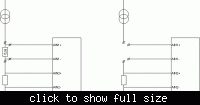Thoma HAUC
Junior Member level 2

Hello,
I start to design a RTD measurement circuit based on a current-loop signal conditioning. And now, I am wondering if it would be possible, with some modifications, to measure also TC.
This functionality should work without the use of relay. I know it is possible as some companies offer this king of input.
Thank you in advance
Thoma
I start to design a RTD measurement circuit based on a current-loop signal conditioning. And now, I am wondering if it would be possible, with some modifications, to measure also TC.
This functionality should work without the use of relay. I know it is possible as some companies offer this king of input.
Thank you in advance
Thoma


